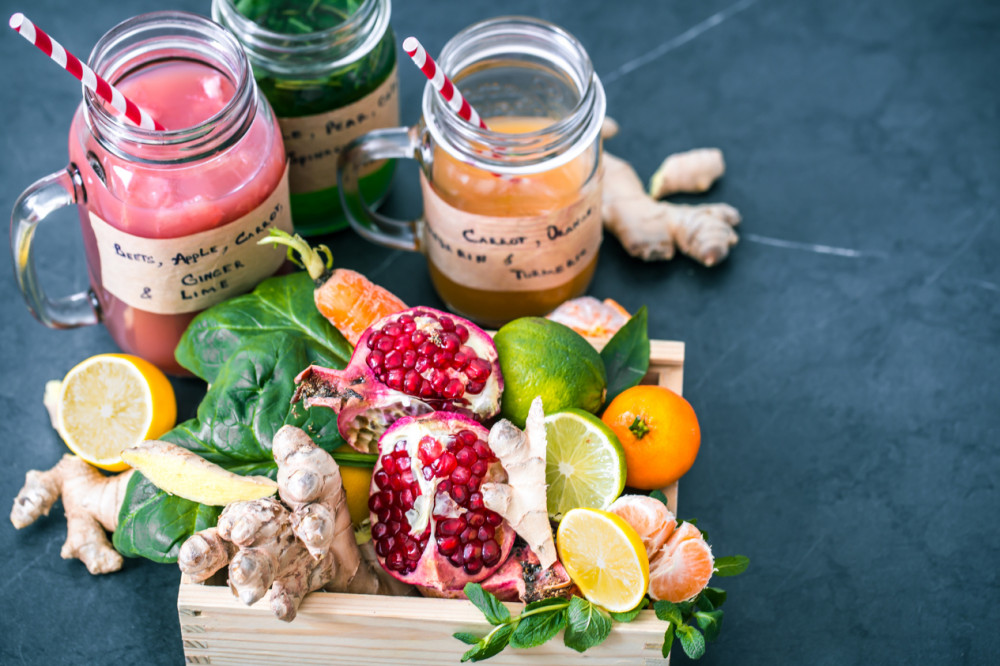
10 Vegetarian Japanese Dishes That Are Surprisingly Easy to Make

Japanese food is more than just sushi and seafood. Do you know that vegetarian Japanese food has been part of the country's culture for centuries? Grown from Zen Buddhist philosophies and great respect for the seasons' offerings, Japanese vegetarian food presents a sophisticated combination of umami, texture, and nutrition—all without the inclusion of meat or fish.
Whether you're a plant-based foodie or just looking into simple Japanese recipes for your next evening dinner, you'll be thrilled to learn that some of the most full-flavoured and filling dishes are completely meat-free—and surprisingly easy to make in the comfort of your kitchen.
In this guide, with Foodism, we’ll explore 10 vegetarian Japanese dishes that are not only easy to make but also authentic and bursting with flavour. Let’s begin our culinary journey to Japan, from your kitchen.
1. Vegetarian Miso Soup Recipe
Vegetarian miso soup is a cornerstone of Japanese cuisine and surprisingly simple to prepare. This umami-rich soup is comforting and nourishing.
Ingredients:
- 4 cups kombu-shiitake dashi (vegetarian dashi)
- 2 tablespoons white miso paste
- 1/2 block firm tofu, cubed
- 1/4 cup dried wakame seaweed, rehydrated
- 2 tablespoons finely chopped green onions
Instructions:
- Prepare vegetarian dashi by soaking 1 piece of kombu and 3 dried shiitake mushrooms in 4 cups of water for at least 30 minutes. Simmer for 15 minutes and strain.
- Heat the dashi gently in a saucepan without boiling.
- Add cubed tofu and soaked wakame seaweed.
- Dissolve miso paste using a ladle: scoop some hot broth into a ladle, add miso, stir gently, then return to the pot.
- Serve hot with a sprinkle of green onions.
Pro Tips:
- Never boil the vegetarian miso soup after adding miso—it kills the probiotics and alters the flavour.
- Use white miso for a milder, sweeter vegetarian miso soup; red miso for a deeper flavour.
2. Onigiri (Japanese Rice Balls)
Onigiri are savoury rice balls that can be filled with various vegetarian fillings. They're portable, versatile, and fun to make.
Ingredients:
- 2 cups cooked Japanese short-grain rice (cooled slightly)
- Salt for seasoning
- 2 tablespoons ume plum paste, pickled vegetables, or sautéed mushrooms
- Nori seaweed sheets, cut into strips
Instructions:
- Wet your hands to prevent sticking. Rub a pinch of salt on your palms.
- Take about 1/3 cup of rice, flatten it slightly, and place a teaspoon of filling in the centre.
- Enclose the filling with rice and shape into a triangle.
- Wrap with a strip of nori and press gently to secure.
Pro Tips:
- Keep your hands moist while shaping onigiri to maintain smooth surfaces.
- Mix a few sesame seeds or furikake into the rice for extra flavour and texture.
3. Yasai Udon (Vegetarian Udon Noodle Soup)
Yasai udon is a warm and hearty noodle dish loaded with vegetables in a flavorful broth.
Ingredients:
- 200g udon noodles
- 4 cups vegetable broth
- 2 tablespoons soy sauce
- 1 tablespoon mirin
- 1 teaspoon sesame oil
- 1/2 cup carrots, julienned
- 1 cup napa cabbage, chopped
- 1/2 cup shiitake mushrooms, sliced
- 1/2 cup baby spinach
- Garnish: green onions, sesame seeds
Instructions:
- Cook udon noodles according to the package. Rinse with cold water and set aside.
- Heat broth with soy sauce, mirin, and sesame oil.
- Add carrots, cabbage, and mushrooms. Simmer for 5–7 minutes until tender.
- Add spinach and cooked noodles. Warm through.
- Ladle into bowls and garnish with green onions and sesame seeds.
Pro Tips:
- Use frozen udon noodles for the best chewy texture.
- Add a spoonful of miso or grated ginger to elevate the yasai udon broth.
4. Nasu Dengaku (Miso Glazed Eggplant)
Nasu Dengaku is grilled eggplant with a sweet-savoury miso glaze—a true flavour bomb in vegetarian Japanese cooking.
Ingredients:
- 2 Japanese eggplants, halved lengthwise
- 1 tablespoon neutral oil
- 2 tablespoons miso paste
- 1 tablespoon sugar
- 1 tablespoon mirin
- 1 tablespoon sake
- Garnish: sesame seeds, chives
Instructions:
- Score eggplant flesh in a crosshatch. Brush with oil.
- Broil or grill until soft and golden (8–10 minutes).
- Mix miso, sugar, mirin, and sake in a pan. Cook for 2 minutes until thick.
- Spread the glaze on eggplants. Broil again for 2–3 minutes until bubbly.
- Garnish and serve warm.
Pro Tips:
- For a crispier texture, salt and drain eggplants before cooking.
- Use white or red miso based on your flavour preference for nasu dengaku.
5. Tamagoyaki (Japanese Sweet Omelette – Vegetarian)
Tamagoyaki is a delicately rolled sweet-salty omelette often found in bento boxes.
Ingredients:
- 3 large eggs
- 1 tablespoon soy sauce
- 1 tablespoon sugar
- 1 teaspoon mirin
- Neutral oil for the pan
Instructions:
- Beat eggs with soy sauce, sugar, and mirin.
- Heat a rectangular tamagoyaki pan, lightly oil it.
- Pour a thin layer of egg, cook halfway, and roll to one side.
- Add more egg, lift the roll, and repeat.
- Once done, let cool and slice into pieces.
Pro Tips:
- Strain eggs before cooking for a smooth texture.
- Practice rolling technique for a perfect layered tamagoyaki.
6. Kinpira Gobo (Braised Burdock Root and Carrot)
Kinpira gobo is a stir-fried and simmered root vegetable dish with a savoury-sweet glaze.
Ingredients:
- 1 burdock root, julienned
- 1 medium carrot, julienned
- 1 tablespoon soy sauce
- 1 tablespoon mirin
- 1 teaspoon sugar
- 1 teaspoon sesame oil
- Optional: chilli flakes
Instructions:
- Soak burdock strips in water for 10 minutes.
- Heat sesame oil, sauté burdock and carrot for 5 minutes.
- Add soy sauce, mirin, and sugar. Simmer until the liquid is reduced.
- Sprinkle sesame seeds before serving.
Pro Tips:
- Use a mandolin for even slicing of kinpira gobo vegetables.
- Add chilli for a spicy twist on traditional kinpira gobo.
7. Vegetarian Japanese Curry
Vegetarian Japanese curry is a rich, mild curry served with fluffy rice—an easy family favourite.
Ingredients:
- 2 potatoes, peeled and cubed
- 1 carrot, sliced
- 1 onion, sliced
- 1 small apple, grated
- 3 cups water
- 2 blocks of vegetarian Japanese curry roux
- Oil for sautéing
Instructions:
- Sauté onions until translucent. Add carrots and potatoes.
- Pour in water, boil, and simmer for 15 minutes.
- Stir in curry roux until dissolved.
- Add grated apple and simmer for 5–10 minutes more.
- Serve with steamed rice.
Pro Tips:
- Let the curry sit for an hour to deepen flavours.
- Add lentils or chickpeas for protein-rich vegetarian Japanese curry.
8. Hiyayakko (Chilled Tofu)
Hiyayakko is a minimalist tofu dish that's cooling and elegant.
Ingredients:
- 1 block of silken tofu
- 1 teaspoon grated ginger
- 1 tablespoon chopped green onions
- 1 tablespoon soy sauce
Instructions:
- Drain tofu and cut into cubes.
- Top with ginger, green onions, and drizzle soy sauce.
Pro Tips:
- Use fresh, high-quality silken tofu for best results.
- Serve hiyayakko cold, directly from the fridge for ultimate refreshment.
9. Sunomono (Japanese Cucumber Salad)
Sunomono is a refreshing vinegar-based salad that balances any Japanese meal.
Ingredients:
- 2 Japanese cucumbers, thinly sliced
- 1/4 tsp salt
- 2 tbsp rice vinegar
- 1 tbsp sugar
- 1 tsp soy sauce
- Garnish: sesame seeds
Instructions:
- Salt cucumber slices, let sit for 10 minutes. Squeeze out moisture.
- Mix vinegar, sugar, and soy sauce in a bowl.
- Toss cucumbers in dressing, garnish with sesame seeds.
Pro Tips:
- Slice cucumbers as thin as possible for tender-crisp sunomono.
- Chill for 30 minutes for a deeper flavour.
10. Mitarashi Dango (Soy Glazed Rice Dumplings)
Mitarashi dango is a beloved Japanese street food—sweet rice dumplings with soy caramel glaze.
Ingredients:
- 1 cup glutinous rice flour
- 1/2 cup warm water
- 2 tbsp soy sauce
- 2 tbsp sugar
- 1 tbsp mirin
- 1/2 tbsp cornstarch + 1 tbsp water
Instructions:
- Mix rice flour and water into a smooth dough. Form into small balls.
- Boil until they float. Cool in ice water. Skewer.
- Grill or pan-toast until golden.
- Make glaze by heating soy sauce, sugar, mirin, and thickening with cornstarch slurry.
- Brush glaze over mitarashi dango and serve.
Pro Tips:
- Knead the dough well for a chewy texture.
- Char lightly for an authentic mitarashi dango look and taste.
There you go—10 vegetarian Japanese foods that not only taste great but are also full of flavour, tradition, and culture. Whether you're making a comforting bowl of yasai udon, the straightforwardness of veggie miso soup, or the rich, indulgent chew of mitarashi dango, each one tempts you to enjoy the spirit of Japan—mindfully and deliciously.
These Japanese recipes are the ultimate doorway to nutritious, wholesome meals. So, put on your apron, get your ingredients ready, and begin discovering the art of simple Japanese recipes with a vegetable spin.
What vegetarian Japanese recipe will you be trying first? Share your creation with our vibrant food community. Download the Foodism app now!
Related Blogs

How to Store Festive Leftovers Without Losing Taste or Freshness
21 Views

Quick Diwali Sweets Recipes 2025: Ready in Under 30 Minutes
30 Views

October Smoothies: Indian Fruits & Spices to Boost Immunity
33 Views

Indian Autumn Baking 2025: Pumpkin, Jaggery & Cardamom Cake Recipes
60 Views

Street Food at Home: Chaat Recipes You Can Make This Festival Season
50 Views